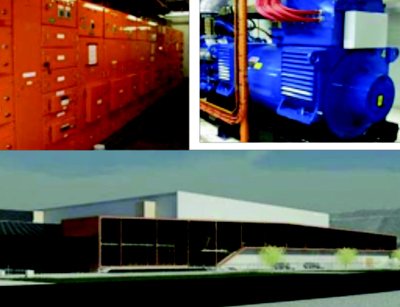At the turn of the century it was evident that most present-day data centers were entering a palaeontology cycle, and that a dynasty of new-age replacements was already in the process of turning soil in prospective areas across the world.
Westpac Group was always going to be one of the leaders in this space. Regarded as a leading global financial services company, Westpac’s efforts go further than delivering in its key business areas. It is also a global leader for banks in the Dow Jones Sustainability Index, and has been since 2002.
Westpac initiated its Strategic Investment Priorities (SIPs) in 2009. One of these SIPS was dedicated to establishing a new data center and upgrading an existing one, thereby commencing a consolidation of nine sites to just two modular and scalable facilities totalling 6,000 sq m with a capacity to support 6MW of IT load. These data centers have been rated at a Tier III capability and are presently referred to as Primary and Secondary.
The significance of this ‘legacy’ reference is that Westpac Group has a much longer-term strategy where the data centers will become just one component of a ‘virtual’ fabric. Without decreasing any level of availability or capability, the Tier-rating will be replaced by a level of redundancy governed by the purpose of sustainability (resilience and robustness) across the entire design and architecture of the IT infrastructure (‘fabric’).
While the design and architecture is an underlying foundation, also paramount is the discipline of ensuring that every building block is cohesive and equally responsive in its performance, maintainability and recoverability.
For Westpac Group, having ITIL (for IT service management) and COBIT (a framework for governance) as standards is imperative and for its data centers the introduction of the EU Code of Conduct (Best Practice for Data Centres) under the CEEDA (Certified Energy Efficiency Datacentre Award) umbrella has strengthened that composition.
This framework is an essential element to assist in addressing efficiency, where the applications are architected to perform in a fully integrated manner with Westpac’s Information Technology (IT) Standard, and where software and hardware form part of the IT Procurement Policy under the IT Strategy.
Westpac Group views the data center environment as being the place where science and engineering merge, with the infrastructure delivering power and cooling in an efficient manner under the guiding principles of Data Centre Infrastructure Management (DCIM) to meet the demand specified by the groupings of technology.
Through the deployment of DCIM and with the combined features of the technology, the data center engineers are able to centralize the collection and analysis of data and interpret this for ongoing fabric improvements and to convert IT into a form of data center economics (ROI and TCO). And so the cycle continues.
The availability of this data/metric provides Westpac Group with two major benefits. First the ability to benchmark its own performance on a regular basis; second the support of government regulatory requirements which necessitates NGER (National Greenhouse Emission Report) and EEO (Energy Efficient Opportunity) reporting for companies such as Westpac Group, where the data center environment represents 17% of our overall emissions.
The inclusion and application of CEEDA as a discipline across the fabric provides data centres with the independence and a voice in helping in the construction of business cases and budgets that will have as its center-piece the benefit of sustainability and efficiency.
CEEDA has been developed to enable data center operators or organizations to demonstrate their commitment to enhancing energy efficiency and reducing carbon emissions.
The program provides the data center with a comprehensive report and detailed action plan. That then becomes the roadmap for the business, providing constructive measures that can be used to further meet best practices.
BCS, The Chartered Institute for IT, owns and manages the CEEDA program and data centers can be assessed by a BCS Accredited Program Provider (APP). Currently the primary APP is DCProfessional Development.
www. ceedacert.com

